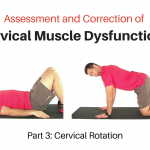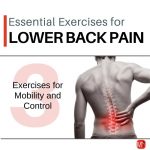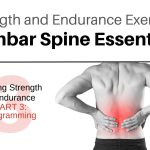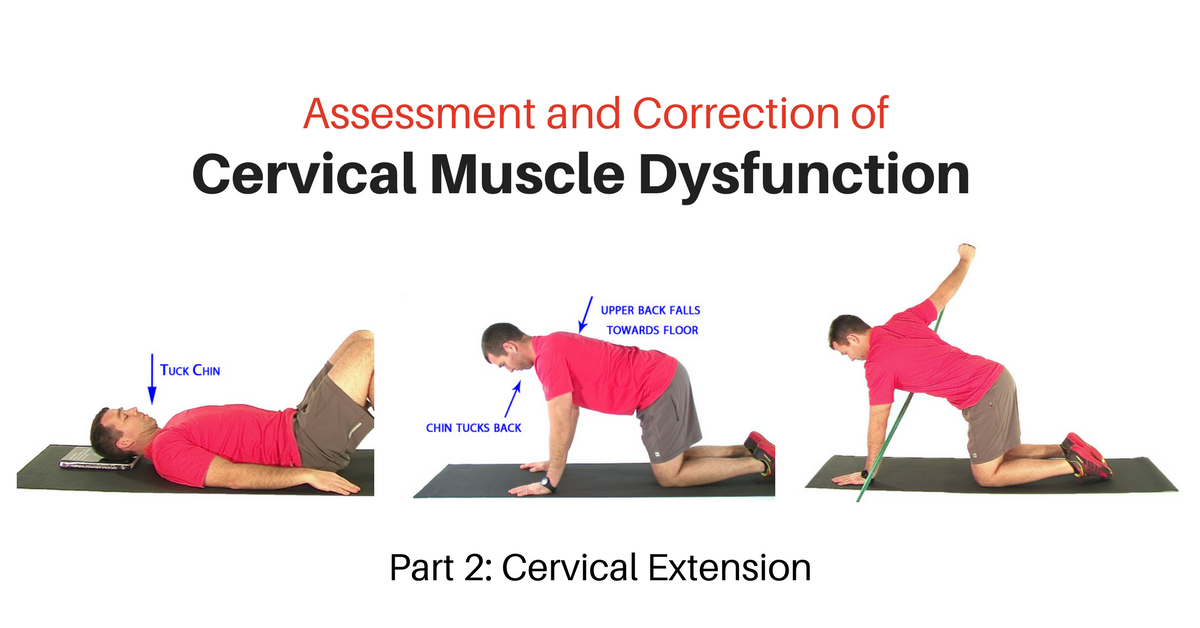
Muscle imbalances are a common cause of neck pain and dysfunction. As such, clinicians must be able to assess and correct these imbalances. That’s the topic of the this three part article series.
My objective is to discuss assessment and corrective exercise recommendations for some of the most common muscle imbalances affecting the cervical spine. In the first article we discussed the deep neck flexors. In this article we will discuss the cervical extensors. The next and final article will cover the cervical rotators.
Basic Anatomy of the Cervical Extensors
Cervical muscles can be divided into intrinsic and extrinsic muscles. The primary intrinsic extensors include the semispinalis cervicus and capitus, splenius cervicus and capitus, and the longissimus capitus and cervicus. These muscles are well suited for inter-vertebral control and movement. Due to their line of action these muscles are also able to check anterior shear of the lower neck, a common finding with anterior head carriage.
The extrinsic cervical extensors include the Levator Scapulae and Upper Trapezius. These more superficial muscles are better able to generate larger forces with movement or postural demands. However, they are not well suited to control inter-segmental motion.
Under normal circumstances these intrinsic and extrinsic muscles work synergistically. But with many neck, thoracic, and shoulder conditions it is common for the extrinsic muscles to become dominant over the intrinsic extensors. As clinicians we must be able to decipher these imbalances. And we must know what to do when we find them.
Assessment of Cervical Extensor Muscle Imbalance
The Head/Neck Extension Test can be used to assess cervical extensor muscle balance. From a relaxed, prone position simply ask the patient to lift their head up off the examination table. We want to assess the pattern of muscle contraction as the head lifts.
Under normal circumstances the Levator Scapula and Upper Trapezius should remain relaxed. Palpation of these muscles during the movement will confirm this. If these muscles are active it reveals an undesirable compensatory pattern in which the scapulo-cervical muscles are dominant over the cervical extensors.
In addition to active range, we can also test strength. With the head and neck extended off the table gently press the patient’s head into flexion. The patient should be able to resist this pressure without additional muscle activity of the scapulo-thoracic muscles.
Cervical Extensor Exercise Progressions
Failure of any portion of the Head/Neck Extension Test is an indication of cervical extensor dysfunction. In theory it is possible to have weakness of the upper cervical extensors. However, in practice this is rare. More often there will be hyper-extension of the upper cervical spine with excessive flexion and anterior shear of the lower cervical spine. The exercises that follow will be effective for these latter cases.
The head retracted/chin tucked position is the starting point with all of these exercises (this was discussed in the previous article). The patient should be familiar with this movement before progressing to these extension exercises.
Supine Neck Retraction with Isometric Extension
The key to re-training the cervical extensors is to teach the patient to activate the weak or inhibited muscles without the compensatory muscles kicking in. This is a critical step. Otherwise the offending muscle pattern will carry over into the more advanced strengthening exercises. This first exercise is one of the best ways to do this.
Begin in a hook lying position. With anterior head carriage and thoracic hyperkyphosis (which will be the majority of these patients) the neck will have to hyper-extend to bring the head to the floor. To prevent this place a book under the head (larger postural distortion will require a thicker book).
Have the patient tuck their chin in towards their neck. Then press the back of the head into the book. The chin must remain tucked as they do this.
This posterior pressure will create an isometric contraction of the cervical extensors. Firm pressure can be used but the Levator Scapulae and Upper Trapezius much not be active. As the clinician you can palpate these muscles during the exercise make sure they are not compensating for the deeper cervical extensors. I typically have my patients perform 10 repetitions using 10 seconds holds for each rep.
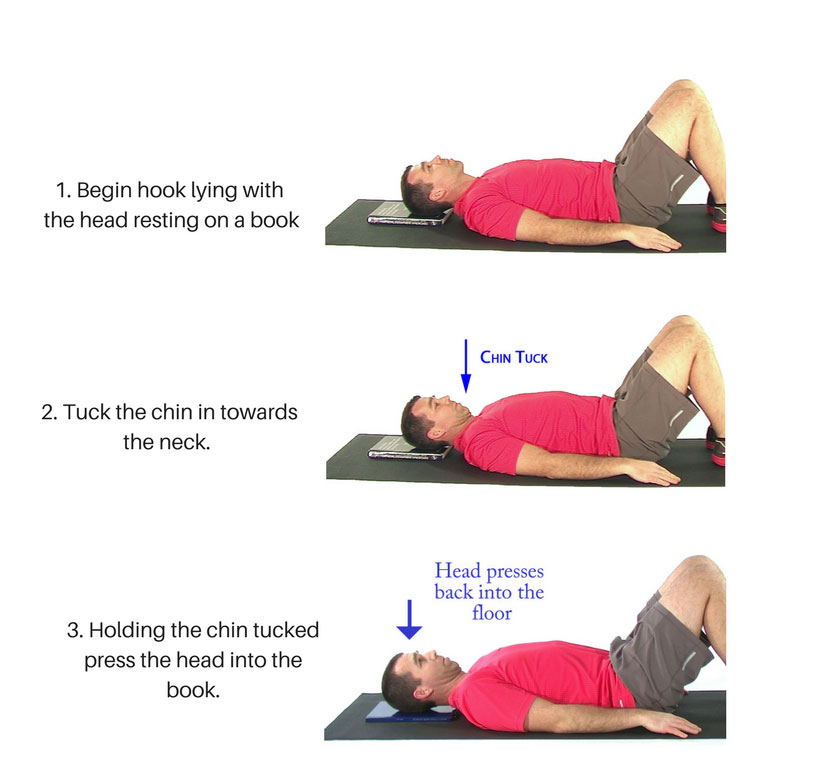
Quadruped Neck Retraction / Extension
This exercise shifts to the quadruped position. In this posture the neck extensors must contract to hold the head and neck in proper alignment against gravity.
Make sure the shoulder blades are relaxed and the thoracic and lumbar spines are in a neutral posture. From this position tuck the chin towards the neck, then gently extend the head back towards the ceiling. This extension should come from the lower neck and upper thoracic spine. It is not a big movement. It is more about bringing the neck back to (and maybe slightly beyond) neutral.
The key is to feel the muscles contract along the spine, but once again, there should be no increased activation of the Levator Scap or Upper Trap.

Adding Shoulder and Scapular Movement
Shoulder motions can be added to to progress the Quadruped Neck Retraction / Extension exercise. This will increase the demand on the neck musculature as well as train scapular strength and control.
The initial set up is the same as discussed above. While holding the neck stable the patient can reach the arm back towards the ceiling. They should be taught to pull the arm by retracting the scapula on the ribcage. Again, this should not cause the Levator Scapulae or Upper Trapezius to kick in. The motion should be driven buy the Lower and Middle Trap and possibly the rhomboid. A free weight or resistance band can be used to load the movement.
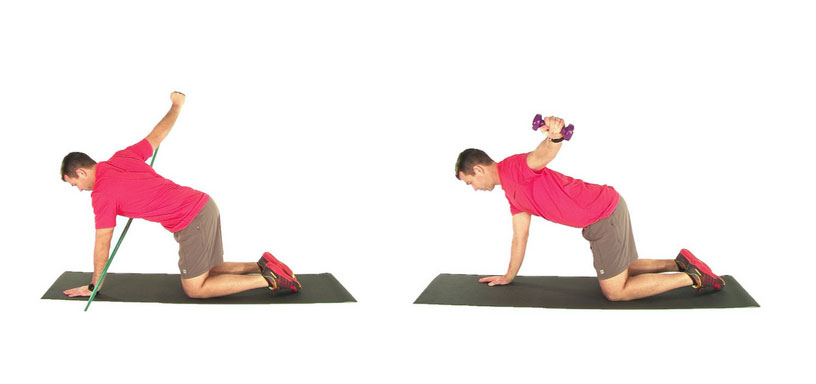
Training the Neck Extensors in the Prone Position
The prone position is also a great option to train the cervical extensors. This exercise provides a simple progression from the quadruped position.
The key to this exercise is to start by tucking the chin. Then focus on pressing the sternum into the floor as the head lifts back. As long as the head and neck are in the right posture the cervical extensors will be activated to hold the posture against gravity. This additional step here is to activate the thoracic extensors as the upper back is no longer supported by the arms in this prone position.
Arm and scapular motions can also be added to progress the exercise as strength and control improve.
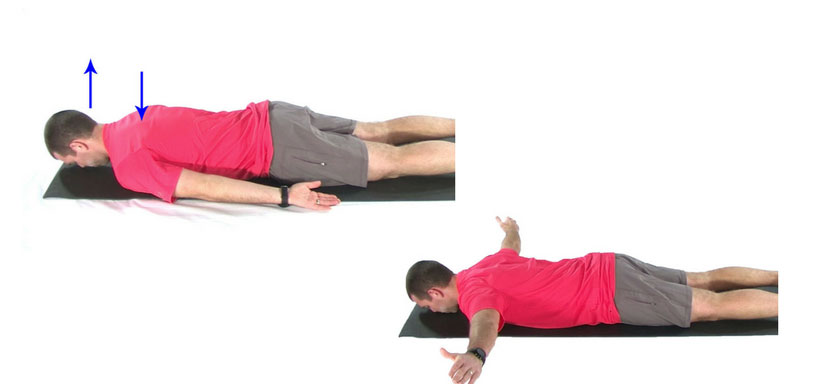
Key Exercises for the Cervical Flexors and Rotators
This article has discussed key exercises to retrain the cervical extensors. But the neck also relies upon the cervical flexor and rotator muscle groups for optimal movement and stability. We discussed the cervical flexors in part one of this article. The rotators will be the topic of our next article.



